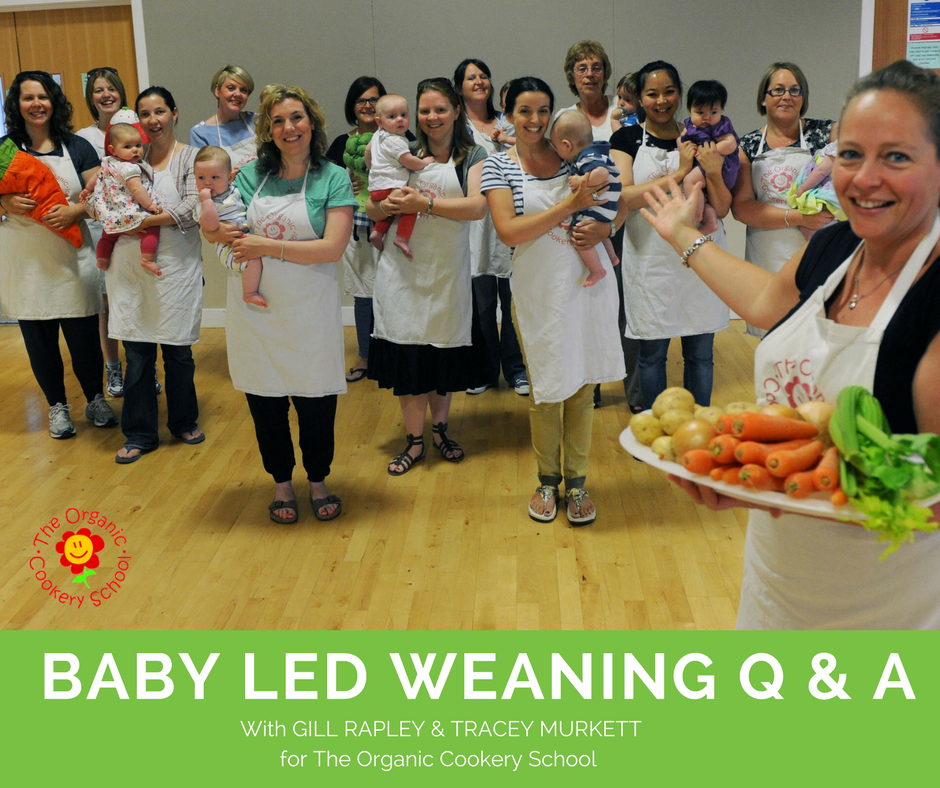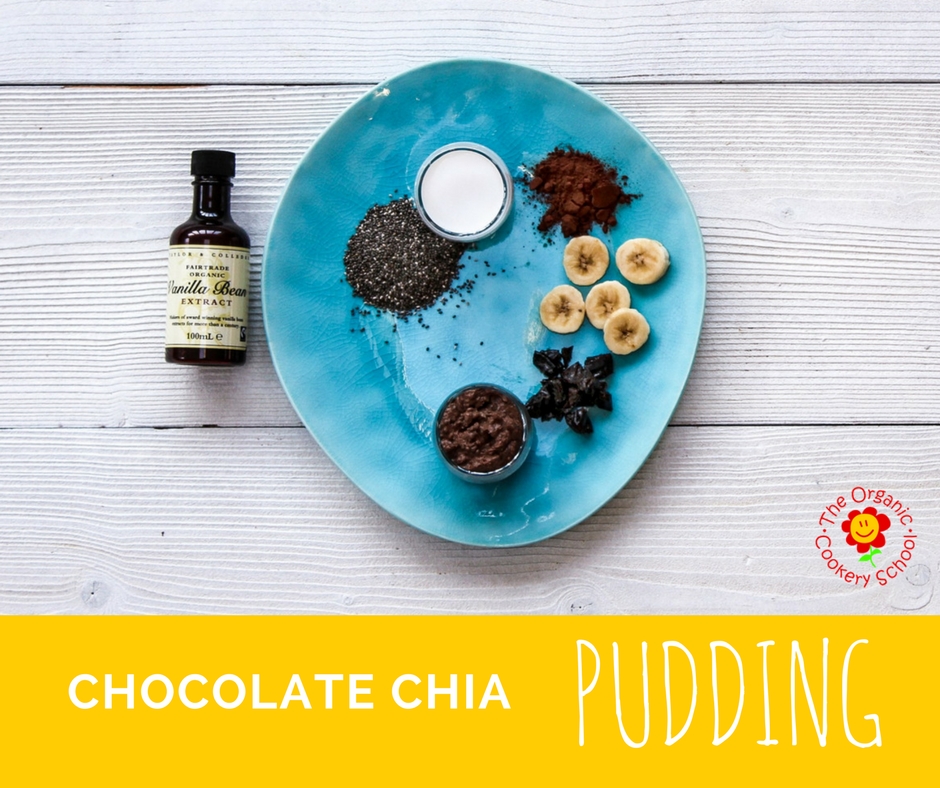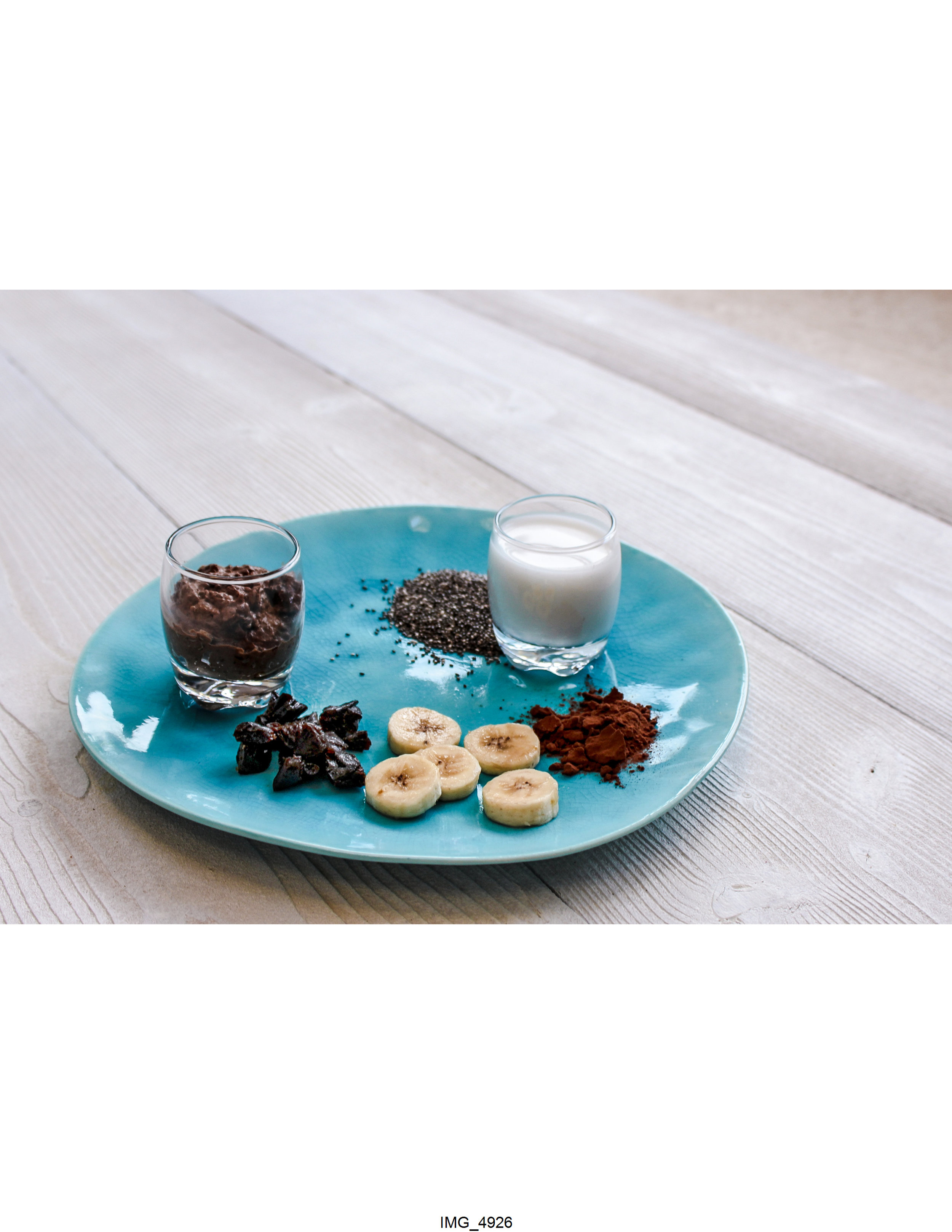About our guest experts:
Gill Rapley, PhD, pioneered the Baby Led Weaning approach to introducing solids to babies and now speaks on the subject at conferences worldwide. Her studies have shown how babies move on to solid food naturally, motivated by curiosity and the instinct to copy those around them.
Tracey Murkett is a freelance writer who discovered the baby-led weaning approach when her daughter was a baby. She has written widely on the topic both in print and online.
Gill and Tracey are the authors of Baby-led Weaning: Help your child to love good food, The Baby-led weaning Cookbook, Baby-led Breastfeeding: How to make breastfeeding work with your baby’s help, and Baby-led Parenting: The easy way to nurture, understand and connect with your baby. [1]
Gill Rapley and Tracey Murkett kindly agreed to answer the following questions about baby-led weaning, submitted by parents attending The Organic Cookery School’s ‘Cooking for Baby’ community cookery and nutrition courses.
Part One:
I’d like to give my baby foods that need a spoon as well as finger food. So is it ok to spoon feed these until he can use a spoon by himself?
If your baby is used to you letting him feed himself he may find it confusing to suddenly have that control taken away from him. There’s no need to actively spoon feed a baby anyway – there are plenty of ways of sharing soup, yoghurt or other runny foods that will allow your baby to remain in control over his eating. For example:
- He can use his hands, provided you don’t mind the mess.
- You can offer him another food to dip into the runny food – a stick of cucumber, say, or a finger of toast.
- You can pre-load a spoon and offer it to him to put into his mouth himself, or let him guide your hand with you holding the spoon (as long as he is truly in control)
- If the food doesn’t have any lumps, and isn’t too thick, he could ‘drink’ it from a small cup (this can work well for yoghurts and smooth soups).
For your baby, the chance to copy and learn is more important than whether he manages to get any food into his mouth, so let him have a spoon to play and practise with, and try not to worry about how much he actually eats.
However, runny foods aren’t essential to a baby’s diet (or anyone else’s!) and many parents simply choose to wait until their baby can manage a spoon by himself before offering this type of food.
I’m worried about meat as my baby doesn’t have many teeth so how does that work?
It’s a good idea to offer your baby meat as soon as he starts exploring solid foods, since it’s a good source of iron, which is the nutrient most babies begin to need first, in addition to their milk feeds. Most babies who have no teeth at all can manage strips of chicken or moist, lean beef or lamb, and there are lots of ways to prepare meat so that it is easy to chew. For example, minced meat can be made into patties or burgers, or you can slow cook meat in chunks, so that it is soft. Even chewing and sucking on something like a lamb chop will give your baby access to iron, even if she doesn’t actually bite off or swallow any of the meat.
I’ve watched some videos and it looks really messy. I really like the idea of this but not the mess. Have you any tips on keeping this to a minimum.
There’s always mess at some point with babies and food, whether you do BLW or spoon feeding. It’s just that with BLW the mess happens at the start and as a result can seem more dramatic than with spoon feeding, where the mess tends to happen a little later. The messy bit tends to be short-lived with BLW and parents who have tried both approaches often report that picking up a piece of food with BLW is far easier than scaping puree off the wall! Toddlers who’ve had the opportunity to develop their eating skills at their own pace seem to make less mess than others. Being able to explore food by touch as well as taste is an important part of how babies learn to recognise different foods and to manage a range of textures safely, so the long-term benefits far outweigh the short-term mess. Having said this, there are things you can do to make the mess easier to manage:
- Cover the floor underneath your baby’s chair with something that’s easily washable, such as a plastic sheet or tablecloth.
- Choose a highchair that’s easy to clean, rather than one with lots of padding and crevices.
- Dress your baby in as few clothes as possible – and plan bath-times for after meals, not before.
- Don’t overload your baby’s plate or tray with food, or keep adding to it when it’s clear he’s lost interest. A few (different) pieces of food at a time will give him the chance to explore without being overwhelmed.
Most babies don’t mind the mess and simply want to concentrate on their food, so wiping your baby’s hands or face while he’s eating is likely to annoy him or make him frustrated. Mealtimes will be more relaxed for everyone if you expect lots of mess and save cleaning it up till the end of the meal.
What are the easiest options to take out when I’m in a cafe or at a friend’s house and don’t have much time/space to BLW.
Just as at home, your baby will be able to eat anything that he is able to pick up. There are usually plenty of things suitable on a café or restaurant menu – even if it’s just a side order of vegetables. It may not be your baby’s usual well-balanced meal but, for the odd occasion, it will be fine. Very salty or sweet things should be avoided – and sauces too if you want to minimise mess! Food on the go can be anything that travels well such as fruit, and sandwiches or savoury scones. Previously cooked meat or vegetables are OK too, provided everything has been safely stored. Babies don’t mind cold food!
I’m due to return to work after Maternity leave when my baby will be 9 months old. I’ll be using a nursery on a couple of days and grandparents on others. I want to make sure whoever is looking after my daughter can easily pick up the weaning methods I’m using, and I’m worried that the grandparents will expect me to provide foods that can be largely spoonfed. Have you any advice?
The first thing to do is to have discussions with both the nursery and your baby’s grandparents about the BLW approach – they may be more receptive to the idea than you expect. If possible, let them see BLW in action, so that they can appreciate your baby’s skills and see how you interact with her when she is eating (e.g. offering food rather than giving it, eating with her, allowing her to decide when she’s had enough). The main safety points are important (such as making sure she is sitting upright and no one but the baby puts food into her mouth), along with respecting both your daughter’s abilities and her appetite.
If they are not willing to allow your daughter to feed herself, they can simply mash whatever food you provide and offer it by spoon. In this case, explain to them that it’s important not to persuade her to eat more than she wants or faster than she wants, and to allow her free access to breastmilk or formula. Most babies adapt to different approaches from different people but some become frustrated or refuse to be spoon fed. This usually prompts the carers to think again about the value of spoon feeding but, if not, it may result in the baby refusing solid food except when at home. If this should happen, provided you offer your baby some iron-rich finger foods at least once a day she will be fine on milk alone while she’s away from you.
Gill Rapley and Tracey Murkett, February 2018
We continue this Q & A next week with a further five parent questions on the topic of baby-led weaning, and a selection of our favourite family friendly recipes perfect for baby-led weaning.
If you’d like tips and advice on starting the weaning process, or are a health visitor or parent organisation who’d like to find out more out our online and community weaning courses, sign up below.
Video from Sorry About The Mess, a blog by London mum Chloe Bridges (via Youtube)
References:
[1] author info taken from Baby-led Weaning Quick and Easy Recipe Book













